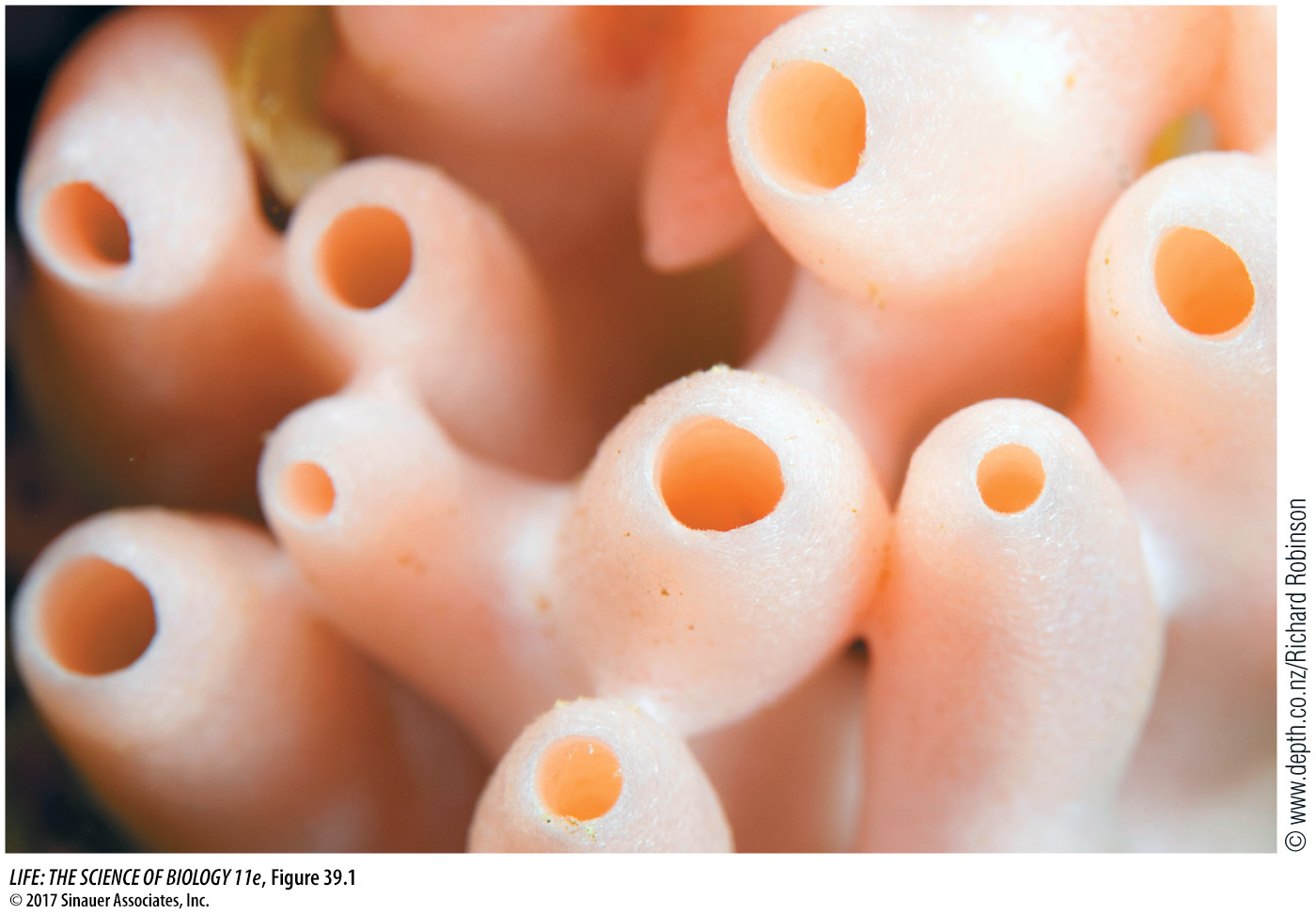There are advantages and challenges to getting bigger
Advantages to being bigger include being able to prey on other organisms and also being able to resist or work against forces in the environment, such as wave forces in reefs. There is a problem, however, that limits how big single-
*connect the concepts Figure 5.2 illustrates how cell volume grows faster than cell surface area as cells get bigger.
Cell specialization is essential for multicellular animals to grow bigger. If a multicellular animal consists of only a few layers of cells, those cells can carry out their own exchanges directly with the environment. A good example is a sponge (Figure 39.1). Bigger organisms have cells that are not in contact with the external environment. The needs of those cells must be supplied by an internal environment—

Cell specializations have tremendous adaptive value for even the simplest multicellular animals. Some cells can be specialized for movement, some for intake of food, and some for reproduction. But evolving a specialized function usually comes at the expense of other cellular functions, which may be lost or at least compromised. The specialized cells of an organism thus engage in a kind of collaborative enterprise by providing services for all of the cells of the organism in return for different services provided by other cells. Thus the cells specialized for movement do not have to also capture and process food, and the reproductive cells do not have to move the whole animal to find a mate. For example, male sex cells are motile cells that are good at seeking out nonmotile female sex cells, but the male sex cells have lost the ability to do many other cell functions such as acquire and process food.